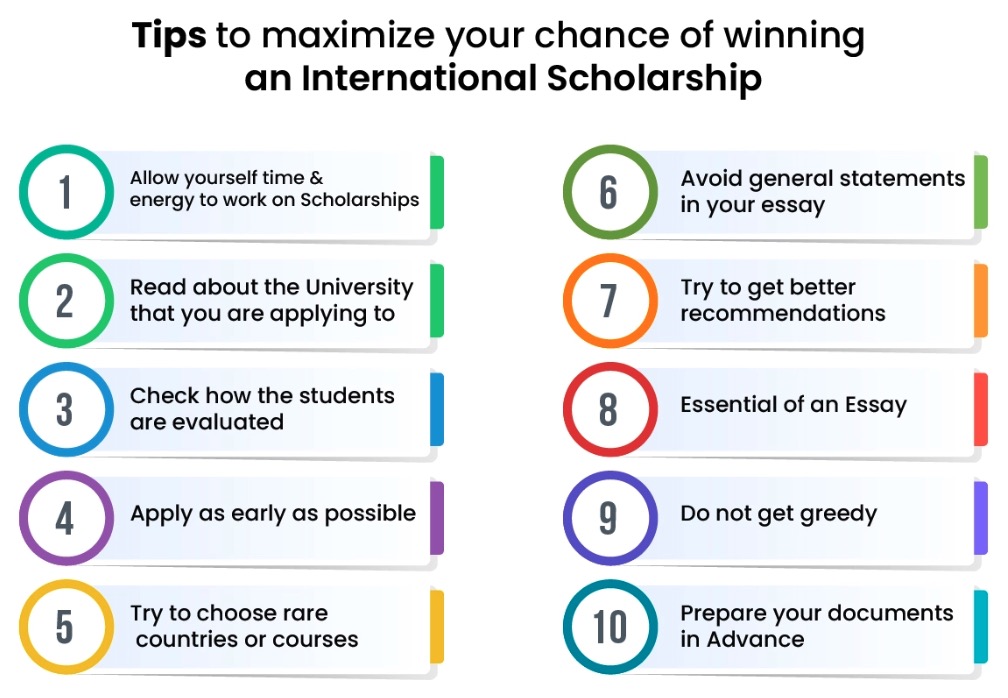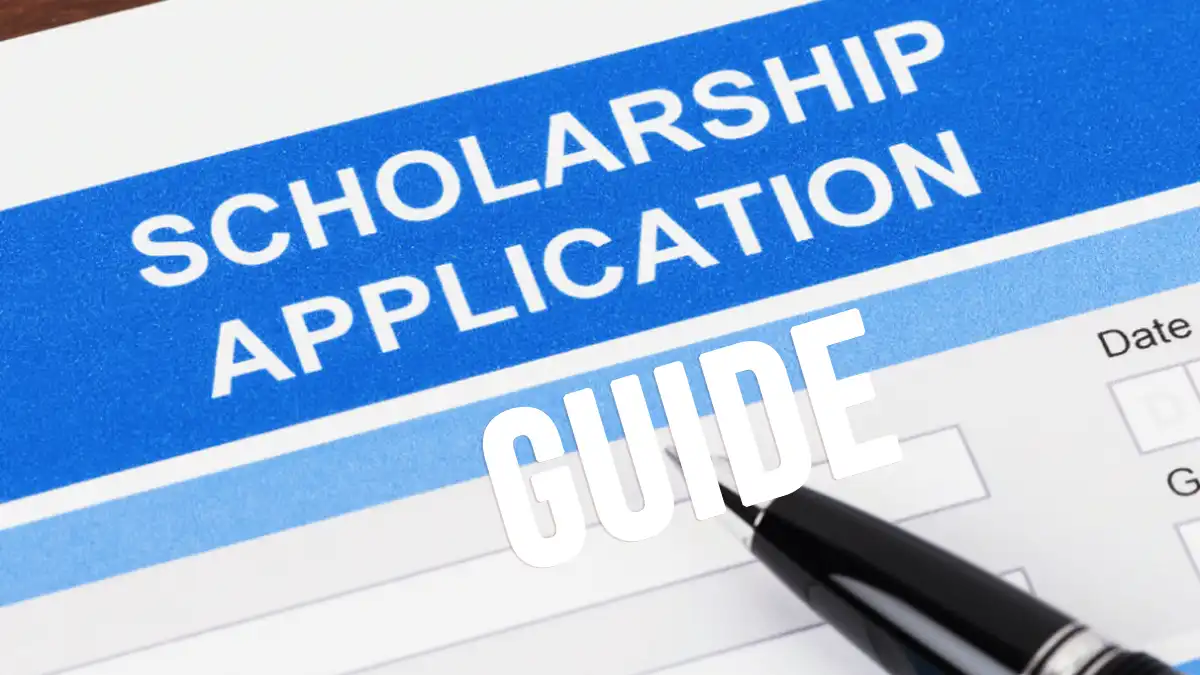Scholarship Application Guide – Hey there, future scholars! So, you’re ready to dive into the world of scholarships but feeling a bit overwhelmed? You’re not alone! With countless opportunities out there, the application process can feel like navigating a maze. How do you stand out in a sea of applicants?[1] What’s the secret sauce for crafting a winning essay?
In this step-by-step guide, we’re breaking it all down for you, complete with real examples to help you along the way. Whether you’re aiming for a small local award or a hefty national scholarship, we’ve got tips and tricks that’ll boost your confidence and your chances. Stick around, and let’s turn that scholarship stress into success!
Scholarship Application Guide
Applying for scholarships can feel daunting, but it doesn’t have to be! A solid scholarship application starts with a great scholarship application letter. Scholarship Application Guide To help you craft yours, we’ve included a scholarship application letter example that showcases what makes a standout letter.
Remember, personal stories and clear goals can really set you apart. With the right approach and our handy tips, you’ll be well on your way to snagging that funding and making your dreams a reality!
Scholarship Application Guide
Applying for scholarships can feel overwhelming, but it’s one of the most effective ways to fund your education without taking on massive student loans. With the right strategy and preparation, scholarships can significantly ease your financial burden. This guide will walk you through each step of the scholarship application process to increase your chances of success.
Introduction to Scholarship Applications
Getting started with scholarship applications can feel like a big task, but it’s totally manageable! The key is to understand what a solid scholarship application looks like, starting with a strong scholarship application letter.
This letter is your chance to shine, so check out a scholarship application letter example to see how to highlight your unique story and goals. Scholarship Application Guide With a little guidance and inspiration, you’ll be on your way to securing that much-needed funding!
Why Scholarships are Important
Scholarships provide an excellent opportunity to receive financial aid without the obligation of repayment. Whether you’re entering college or pursuing a postgraduate degree, scholarships can help reduce tuition, cover books, and even pay for living expenses. Scholarship Application Guide They offer students the freedom to focus on their studies rather than worrying about debt.
Common Myths About Scholarships
Many students believe that scholarships are only for those with the highest grades or those in financial need. However, there are scholarships available for various talents, community involvement, and even unique personal circumstances. Another myth is that applying for scholarships is not worth the time, but even small awards can add up and make a big difference.
Types of Scholarships
When it comes to funding your education, knowing the types of scholarships out there can make all the difference! From merit-based to need-based, there’s something for everyone. Scholarship Application Guide Each type often requires a specific scholarship application, and your scholarship application letter plays a crucial role.
For inspiration, look at a scholarship application letter example that’s tailored to the type of scholarship you’re after. Finding the right fit can help you stand out and secure that funding!
Merit-Based Scholarships
These scholarships are awarded based on academic, athletic, or artistic excellence. Colleges, private organizations, and professional groups offer these to students who demonstrate exceptional skill or achievement in a particular area.
Need-Based Scholarships
Need-based scholarships are designed for students who require financial assistance to afford college. Your eligibility is typically determined by your family’s income, as demonstrated by documents like the FAFSA (Free Application for Federal Student Aid).
Specialized Scholarships (Athletic, Arts, etc.)
For students excelling in sports, music, or other specialized fields, there are scholarships specifically tailored to their talents. Scholarship Application Guide These awards often require you to continue participating in the field during your time in college.
Government vs. Private Scholarships
Government scholarships are typically offered by federal or state governments and often come with stricter guidelines and renewal conditions. Scholarship Application Guide Private scholarships, on the other hand, come from companies, foundations, or individuals and tend to have more flexible criteria.
How to Find Scholarships

Finding scholarships doesn’t have to be a chore! Start by exploring school websites, local organizations, and online databases. Once you spot opportunities, focus on crafting a stellar scholarship application and a personalized scholarship application letter. Scholarship Application Guide Need help? Check out a scholarship application letter example to guide your writing. With a little research and creativity, you’ll be on your way to funding your education!
Online Scholarship Databases
Websites like Fastweb, Scholarships.com, and the College Board’s Scholarship Search allow you to filter and search for scholarships that match your profile. Scholarship Application Guide These databases offer thousands of scholarships across different fields, making it easy to find relevant opportunities.
Local Resources (Schools, Community Centers)
Don’t overlook local opportunities. Scholarship Application Guide High schools, libraries, and community centers often have lists of local scholarships that can be less competitive than national awards.
Social Media and Scholarship Opportunities
Many scholarship providers promote their programs through social media. Following organizations, influencers in education, and even local businesses can help you stay updated on new scholarships.
Networking for Scholarship Leads
Sometimes, the best scholarship opportunities come through word of mouth. Ask your teachers, coaches, or community leaders if they know of scholarships you might qualify for. Networking can open doors to scholarships that aren’t widely advertised.
Understanding Scholarship Eligibility
Understanding scholarship eligibility is key to securing funding! Each scholarship has specific requirements, so read the details carefully. When you prepare your scholarship application, tailor your scholarship application letter to highlight how you meet those criteria. Scholarship Application Guide For added inspiration, check out a scholarship application letter example that showcases strong eligibility. Knowing what’s required can really boost your chances of success!
Academic Requirements
Many scholarships have minimum GPA requirements. Merit-based scholarships especially value students with high academic achievements, but even need-based scholarships often have a GPA cutoff.
Financial Need Criteria
Need-based scholarships often require proof of financial hardship. You’ll usually need to provide financial documents like tax returns and a completed FAFSA to demonstrate your eligibility.
Demographic and Regional Eligibility
Certain scholarships are tailored to specific demographics, such as scholarships for women, minorities, or first-generation college students. Scholarship Application Guide Others may be available only to residents of particular regions or states.
Program-Specific Criteria
Some scholarships are only available for students pursuing specific majors or career paths. For example, STEM (Science, Technology, Engineering, and Mathematics) fields often have dedicated scholarships to encourage growth in these industries.
Preparing Your Scholarship Application
Getting ready for your scholarship application? It’s all about preparation! Start with a solid scholarship application letter that highlights your strengths and goals. Scholarship Application Guide For inspiration, check out a scholarship application letter example to see how to craft yours. A great Scholarship Application Guide can also help you stay organized and focused. Take your time, and make your application shine!
Gathering Necessary Documents
Before starting any application, make sure you have all necessary documents at hand, including transcripts, test scores, financial aid forms, and proof of extracurricular activities. Organization is key to completing applications on time.
Crafting a Winning Personal Statement
The personal statement is often the most important part of your application. It’s your chance to share your story, explain why you deserve the scholarship, and highlight what makes you unique. Scholarship Application Guide Be authentic and passionate in your writing.
Letters of Recommendation
Many scholarships require letters of recommendation from teachers, counselors, or community leaders. Choose individuals who know you well and can speak to your strengths and accomplishments. Ask for these letters well in advance of the deadline.
Understanding Application Deadlines
Missing a deadline can ruin your chances of securing a scholarship. Scholarship Application Guide Make a calendar with all your scholarship deadlines and work backward to ensure you complete each step in time.
Writing a Strong Scholarship Essay
Writing a strong scholarship essay is your chance to shine! Start by revisiting your scholarship application to ensure your essay aligns with your goals. Use a scholarship application letter example as a guide for tone and structure. Scholarship Application Guide The right Scholarship Application Guide can also provide tips on making your essay memorable. Be authentic, share your story, and let your passion shine through!
Understanding the Prompt
Each scholarship essay will have a different prompt. Take time to fully understand what is being asked before you start writing. Tailor your response to meet the specific goals of the scholarship provider.
Structuring Your Essay
Your essay should have a clear introduction, body, and conclusion. Scholarship Application Guide Start with a hook that grabs the reader’s attention, provide supporting evidence for your claims, and finish with a strong conclusion that reinforces your main points.
Common Mistakes to Avoid
Avoid generic statements, grammatical errors, and veering off-topic. Scholarship Application Guide Remember to show, not just tell – give specific examples of your achievements and experiences.
Proofreading and Feedback
Always proofread your essay for errors. It’s also helpful to get feedback from teachers, friends, or family members before submitting your essay.
Building a Strong Resume for Scholarships
Building a strong resume for your scholarship application is super important! Highlight your achievements, volunteer work, and skills that align with what the scholarship committee values. Scholarship Application Guide Use a scholarship application letter example as inspiration for how to present yourself effectively. A good Scholarship Application Guide can help you format and prioritize your info. Make sure your resume reflects who you are and what you bring to the table!
Highlighting Key Achievements
Your resume should highlight your academic achievements, extracurricular activities, leadership roles, and any awards or honors you’ve received. Scholarship Application Guide Be concise but specific in listing your accomplishments.
Including Relevant Volunteer Work and Extracurriculars
Volunteering and extracurricular activities show scholarship committees that you are well-rounded and community-minded. Be sure to include any volunteer work or clubs that align with the scholarship’s values.
Tailoring Your Resume to the Scholarship
Just like your essay, your resume should be tailored to the specific scholarship. Highlight experiences that align with the scholarship’s goals and objectives.
Preparing for Scholarship Interviews
Preparing for scholarship interviews can feel a bit nerve-wracking, but you’ve got this! Start by reviewing your scholarship application and the key points from your scholarship application letter. Think about how you can expand on those in the interview. Scholarship Application Guide For a confidence boost, check out a scholarship application letter example to remind yourself what makes you stand out. Practice your answers, and remember to be yourself!
Researching the Scholarship Provider
If the scholarship includes an interview, research the provider thoroughly. Understand their mission and values so you can align your answers with what they’re looking for in a candidate.
Practicing Common Interview Questions
Practicing common scholarship interview questions, like “Why do you deserve this scholarship?” or “What are your career goals?” will help you feel more confident during the actual interview.
Confidence and Presentation Tips
Dress appropriately, maintain eye contact, and speak clearly. Confidence is key, but don’t come off as overconfident. Be polite and professional throughout the interview.
How to Submit a Standout Application
Submitting a standout scholarship application is all about showcasing your unique voice! Start with a compelling scholarship application letter that highlights your achievements and goals. Don’t hesitate to personalize it! For inspiration, check out a scholarship application letter example that really pops. Proofread carefully, stick to guidelines, and make sure your passion shines through. With these tips, you’ll be on your way to impressing the reviewers!
Avoiding Common Application Mistakes
One of the easiest ways to miss out on a scholarship is by making simple mistakes. Always double-check your application for errors, incomplete sections, and missing documents.
Triple-Checking Your Application
Before submitting your application, review everything again. Make sure all required materials are attached, and that you’ve followed every instruction exactly.
Following Up After Submission
After submitting your application, it’s a good idea to follow up with the scholarship provider to confirm that they received everything. This shows initiative and ensures nothing was missed.
Handling Scholarship Rejections

Facing scholarship rejections can sting, but it’s not the end of the road! Take a moment to reflect on your scholarship application and think about how you can improve. Review your scholarship application letter—did it showcase your unique story? If you need inspiration, check out a scholarship application letter example that impressed others. Keep pushing forward; your next opportunity might be just around the corner!
Learning from Rejection
Not every application will be successful, and that’s okay. Take rejections as a learning opportunity. Review any feedback you receive and use it to improve future applications.
Reapplying in the Future
Some scholarships allow you to reapply in subsequent years. If you didn’t get the scholarship this time, consider what changes you can make to strengthen your application next year.
Exploring Other Financial Aid Options
If scholarships don’t work out, there are other forms of financial aid available, including grants, loans, and work-study programs. Keep exploring all avenues to fund your education.
What to Do After Winning a Scholarship

Winning a scholarship is an amazing achievement, but what’s next? First, celebrate your success! Then, follow any instructions provided with your scholarship application. You might need to send a thank-you note or submit a scholarship application letter detailing how the funds will support your education. For ideas, check out a scholarship application letter example that captures gratitude and future goals. Keep that momentum going!
Accepting the Scholarship Offer
Once you’ve won a scholarship, make sure you follow the instructions to formally accept it. This might include signing agreements, providing additional documentation, or attending an award ceremony.
Scholarship Maintenance (Renewal Criteria, GPA, etc.)
Some scholarships are renewable for multiple years, but you may need to maintain a certain GPA or meet other criteria. Be sure to understand these requirements to keep your scholarship.
Using Scholarship Funds Effectively
Most scholarships will specify what the funds can be used for, such as tuition, books, or living expenses. Be sure to follow these guidelines and manage your funds responsibly.
Conclusion
Keys to a Successful Scholarship Application – Applying for scholarships requires dedication and persistence. By staying organized, crafting strong applications, and paying attention to deadlines, you can significantly increase your chances of securing financial aid. Remember, the effort you put into applying for scholarships can pay off in big ways, helping you achieve your educational and career goals without the burden of excessive debt.
FAQs About Scholarship Application Guide
How early should I start applying for scholarships?
It’s best to start researching and applying for scholarships as early as your junior year of high school. Many scholarship deadlines occur long before your first year of college.
Can I apply for multiple scholarships at once?
Absolutely! In fact, applying for multiple scholarships increases your chances of winning. Just be sure to tailor each application to the specific scholarship.
What if I don’t meet all the eligibility criteria?
It’s important to only apply to scholarships for which you meet the eligibility criteria. However, there are countless scholarships available, so you’re bound to find ones that match your qualifications.
Do all scholarships require essays?
No, not all scholarships require essays, but many do. Some may require videos, portfolios, or simply filling out a form. Always check the specific requirements.
How can I improve my chances of winning a scholarship?
To improve your chances, apply to as many scholarships as possible, focus on tailoring your applications, and make sure your essays and personal statements are compelling and well-written.
Reference
- https://en.wiktionary.org/wiki/applicant
